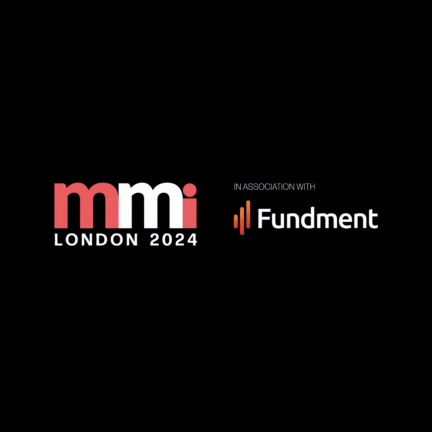For much of its long and fascinating history, Denmark was of little interest to food lovers. Its contribution to world cuisine comprised industrially produced bacon, some nice butter and the endless amusement provided to adventurous culinary travellers by spunk, salty liquorice sweets available in little boxes in every corner store.
In 2003, things changed. A young chef called René Redzepi opened Noma in Copenhagen and led a deeply photogenic movement towards an almost Japanese presentation of ingredients that were exotic and tempting, not because of their price, but because they’d been locally foraged. “New Nordic cuisine” was born, entirely novel and fully disconnected from the classical French canon.
Copenhagen quickly became a destination for a new international Foodie Jet Set. Sure, food lovers had always travelled. Paris, Lyon, Florence or Barcelona had long attracted those interested in the finest executions of the great cuisines of Europe. People would make an effort to go to El Bulli or The French Laundry, but Copenhagen was something new. It sprang into being as a “foodie destination” on no rootstock older than Redzepi’s odd vision.
Noma was recognised early by the two self-appointed arbiters of International Fine Dining. Michelin originally rated food for the French, then naturally became essential for foreign visitors to France and finally pronounced on fine dining across all traditions and all territories. In 2002, the upstart The World’s 50 Best arrived with the bold intention of judging the entire culinary world on their own new criteria of fine dining. Both recognised immediately what was going on in Copenhagen and seized upon it. Ironic, really, considering Noma’s fabulous ethos of hyper-localism, that it should become ground zero for an entirely globalised phenomenon.
Today, Copenhagen is one of the most enjoyable places in the world to eat. It does gastronomy like Florence does art. It seems like every sandwich wagon and corner bakery is run by bright-eyed kids who staged at Noma. The quality of mid-range eating is stupendous and refreshingly international. But here, we are also at the beating heart and the bleeding edge of modern fine dining.
I visited two restaurants in Copenhagen. Koan is run by a Danish/Korean chef and has two Michelin stars. As you may remember from my review this summer, the 17-course tasting menu was exceptional, but readers may recall a discomfitingly assertive upselling of champagne. It was easy to class as modern international fine dining. But did I love it? On balance, no. The effort undermined the pleasure.
Kadeau is a different proposition. On the ground floor of a residential building in the old docks area of Christianshavn, it’s on a seductively humane scale. I counted about a dozen tables and at least as many staff as customers. The kitchen isn’t just “open” but runs continuously into the dining room. There is no stainless steel in sight. In fact, unless you look really closely, there’s no evidence of any professional kit. The chefs work quietly, but there’s a warm buzz creating an unusual atmosphere of very Danish domestic hospitality. This is not what I expected.
The food, foraged from the chefs’ home island of Bornholm, is stellar. Completely unique celebrations of ingredients I had never encountered, in combinations I could never have imagined. Fourteen courses (of course), but also probably a dozen moments of genuine delight. As with any multicourse menu there’s too much to describe in detail but, as an example, I’ve never had a piece of salmon cold smoked first, with cherry wood, then hot smoked just before serving — serving that involves bringing the perfectly formed tail fillet to the table on a board then digging out only the meat from the core and presenting it in a lavender-scented butter broth. The flavour combination is breathtaking, but the understanding of smoke, heat and fish flesh, the depth of knowledge and respect for the ingredients, leaves me lost for words.
To bring raw fjord shrimp to the table would be satisfying enough, but to wrap five of them in separate “leathers” of tomato, rose, cherry leaf, plum and strawberry is both audacious and the work of a fine mind.
The floor staff, individually assigned to tables, present a precise balance of friendly and efficient. I loved it, self-evidently. It was a dining experience that produced joy by any standards or criteria. But with no tablecloths, no fawning, a deliberate informality and careful avoidance of the old-school signifiers or tropes, isn’t this the antithesis of fine dining?
In the absence of an aristocracy to which I can aspire, this is exactly how I imagine a self-made billionaire genius with a social conscience, a disarmingly humble and democratic ethic, a taste for modest Danish/Japanese design and humbling generosity might live and eat, and, God knows, I find myself willing to pay for it — though it comes in close to £500 per head with a couple of glasses of wine. This is going to be as fine a dining experience as I’m ever going to have. It doesn’t “feel” like fine dining, by any of the old standards . . . but it’s only available to a self-selecting set and conforms to a code that increasingly only they can experience and understand. I love it because, uniquely in my experience, it expresses the peak of cooking and the essence of hospitality.
I can’t afford to stay here in Copenhagen, no matter how much I’d like to. I need to get back to London to find out if we can do this at home.
Kadeau
17 Kadeau Copenhagen, Wildersgade 10 B, 1408 Kbh K; kbh@kadeau.dk; +45 33 25 22 23
Menu: DKr3,500 (£390)
Wine pairing: DKr2,200 (£250)
Follow Tim on Instagram @timhayward
Follow @FTMag to find out about our latest stories first and subscribe to our podcast Life and Art wherever you listen










































































































































You must be logged in to post a comment Login